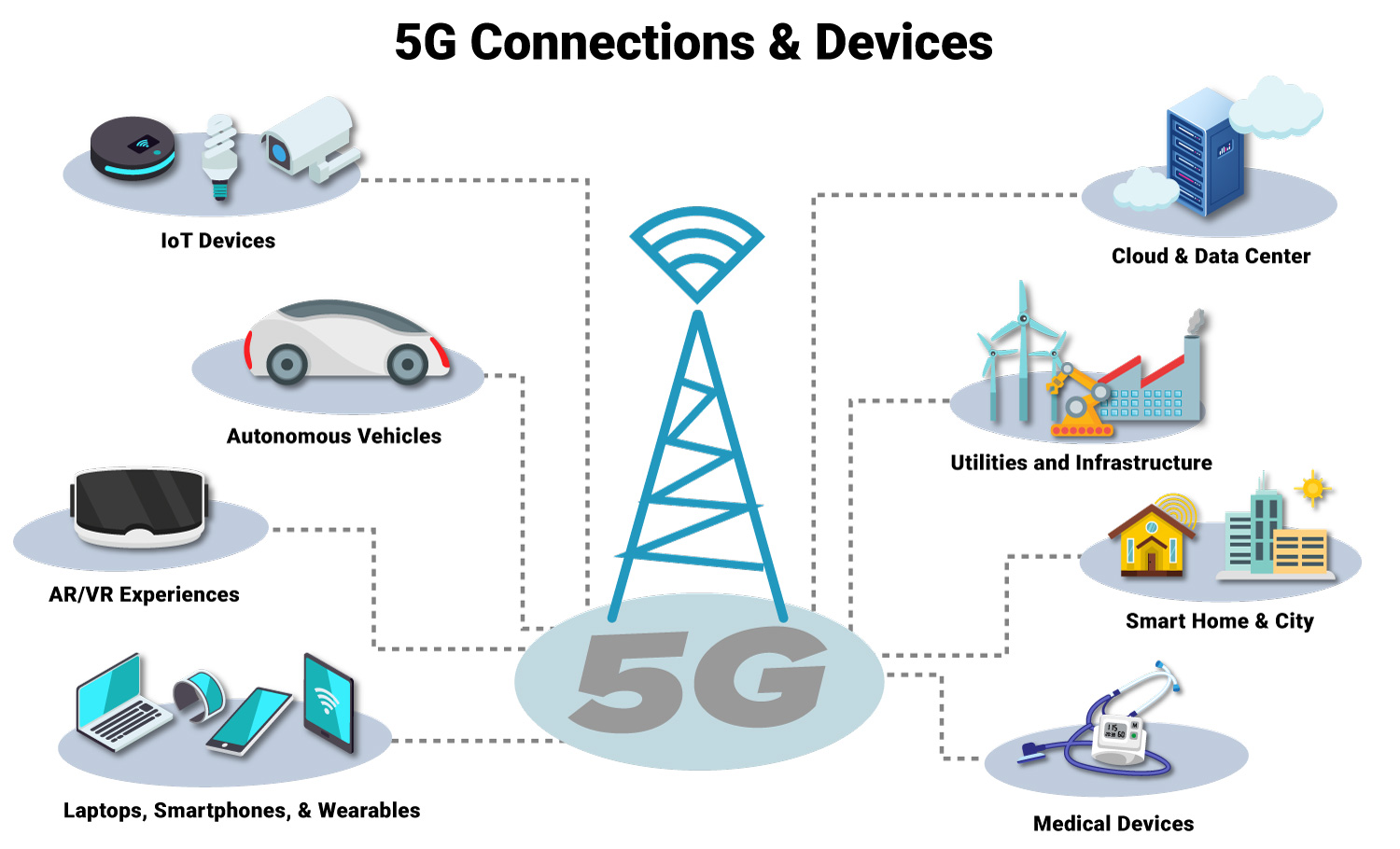Bydly Insights
Explore the latest news, trends, and insights across various topics.
5G: The Speed You Didn't Know You Needed
Discover why 5G is the game-changer you never knew you needed—unleash lightning-fast speeds and elevate your digital experience today!
5G vs. 4G: What Makes the Difference in Speed and Performance?
When comparing 5G and 4G, one of the most notable differences lies in their speed capabilities. While 4G networks can deliver download speeds of around 100 Mbps, 5G technology is designed to provide peak speeds of up to 10 Gbps, which is a substantial increase. This leap in performance not only enhances the user experience for activities such as streaming and online gaming but also facilitates the development of new applications that require real-time data transfer. As the technology matures, 5G is expected to support more connected devices simultaneously, marking a significant upgrade from the limitations of 4G.
In addition to speed, 5G offers improvements in latency, the time it takes for data to travel from the source to the destination. 4G networks typically have a latency of around 30-50 milliseconds, whereas 5G can reduce this to less than 10 milliseconds. This reduced latency is crucial for applications such as autonomous driving, virtual reality, and remote surgery, where immediate responsiveness is key. As a result, the shift from 4G to 5G not only enhances personal connectivity but also paves the way for innovations across various industries.

Unlocking the Power of 5G: How It Transforms Everyday Life
The advent of 5G technology has ushered in a new era of connectivity, dramatically transforming how we interact with our devices and each other. With speeds up to 100 times faster than 4G, 5G enables seamless streaming, instantaneous downloads, and enhanced communication. This connectivity is not just about faster internet; it opens the door to numerous applications that enhance everyday life. From smart home devices that respond to our needs in real-time to advanced telemedicine solutions that allow patients to access healthcare from anywhere, 5G is redefining convenience and efficiency.
Moreover, the implications of 5G technology extend into various domains, such as education, entertainment, and transportation. For instance, educators can leverage virtual reality to create immersive learning experiences, helping students grasp complex subjects more intuitively. In the entertainment sector, low-latency gaming and augmented reality applications are becoming mainstream, offering users exhilarating experiences. Additionally, smart cities powered by 5G will streamline traffic management and improve public safety, ultimately enhancing the quality of life for residents. The future with 5G promises not just faster connections, but a smarter world overall.
Is 5G Worth the Hype? Debunking Common Myths and Misconceptions
The rollout of 5G technology has sparked a plethora of debates, with opinions ranging from enthusiastic support to fierce skepticism. One of the most common myths surrounding 5G is that it is significantly faster than previous generations. While it's true that 5G can offer impressive speeds, it is essential to understand that these speeds depend on various factors such as network infrastructure, device compatibility, and the availability of 5G coverage in a given area. As technologies evolve, it’s vital to discern the hype from the reality, ensuring that users base their expectations on solid data rather than exaggerated claims.
Another prevalent misconception is that 5G networks pose health risks due to increased electromagnetic radiation. However, health organizations, including the WHO, have emphasized that the radio frequencies used by 5G are well within safe limits and have not demonstrated any adverse health effects. It is important to approach new technologies with an informed mindset and rely on credible information rather than unfounded fears. As we navigate this technological evolution, understanding the facts about 5G can help us embrace its potential benefits while remaining aware of the challenges ahead.